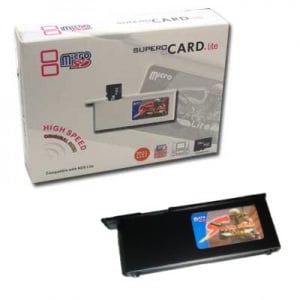Secure Digital Slot
CF(Compact Flash) Slot 2. SD (Secure Digital), SDHC(Secure Digital High Capacity), MMC (Multi Media Card), Mini SD (Mini Secure Digital) Slot 3. M2 (Memory Stick Micro) Slot 4. MS (Memory Stick), MS Pro Duo (Memory Stick Pro Duo) Slot 5. XD (xD-Picture Card) Slot 6. SIM (Subscriber Identity Module) Slot 7. Micro SD (Micro Secure Digital). SDHC (Secure Digital High Capacity) and SDXC (Secure Digital Xtra Capacity) are just newer versions of the SD (Secure Digital) standard that support larger storage capacities and faster processing speeds. If you’re using a new-ish digital camera, the chances are it takes SD format cards, and it should support all three versions.

Secure Digital Input/Output (SDIO) is an important standard for devices that feature interchangeable memory options. In today's exploding world of portable electronics devices, that's a large number indeed.
Memory is stored on various forms of devices. Portable and non-portable devices store information on both internal hard drives and external hard drives. External hard drives have varying degrees of portability, mostly due to the size of the drives.
One way to store memory is on a smaller hard drive. These come in a few shapes and sizes. One is called a Memory Stick. Another is called a Secure Digital (SD) card. This is where SDIO comes in.

An SDIO card is an advanced form of an SD card. An SDIO card can include much more than just data files. In fact, many SDIO cards approximate a mini computer or a powerful software application. SDIO cards can power Bluetooth® adapters, Global Positioning System (GPS) receivers, television tuners, cameras, scanners, voice recorders, and even fingerprint readers. Each of these SDIO cards has a suite of functionality.
Secure Digital/mmc Slot
A prime user of the SDIO card is the smartphone, the powerful handheld device that offers imaging, music, video, email, and perhaps even Internet browsing, using the phone's cellular connection or a nearby WiFi hotspot. Smartphones are, in some cases, one step short of a laptop computer. Because they offer all these functions, they have high memory needs.
Secure Digital (sdxc) Slot
Many portable electronics devices have 'slots' into which users insert sticks or cards of varying storage capacities in order to transfer data in both directions. Slots are usually proprietary, accepting only one form of portable data storage device. Adapters containing more than one slot are available, but the slots themselves are dedicated.
A portable device with an SDIO card slot can accept both SDIO cards and SD cards. The reverse is not true, in the same way that a Universal Serial Bus (USB) 2.0 port can enable a USB 1.0 device but not vice versa. Older technology can't accommodate updates.
SDIO cards were created to fill a growing demand for multimedia content. In effect, an SDIO card is an amalgam of an SD card and an I/O device. This kind of combination is increasingly found in portable electronics devices, especially as those devices offer more and more high-definition or high-resolution features and consequently demand more and more memory. Greater memory requirements necessitate greater memory storage, and the SDIO card fills that bill quite well.